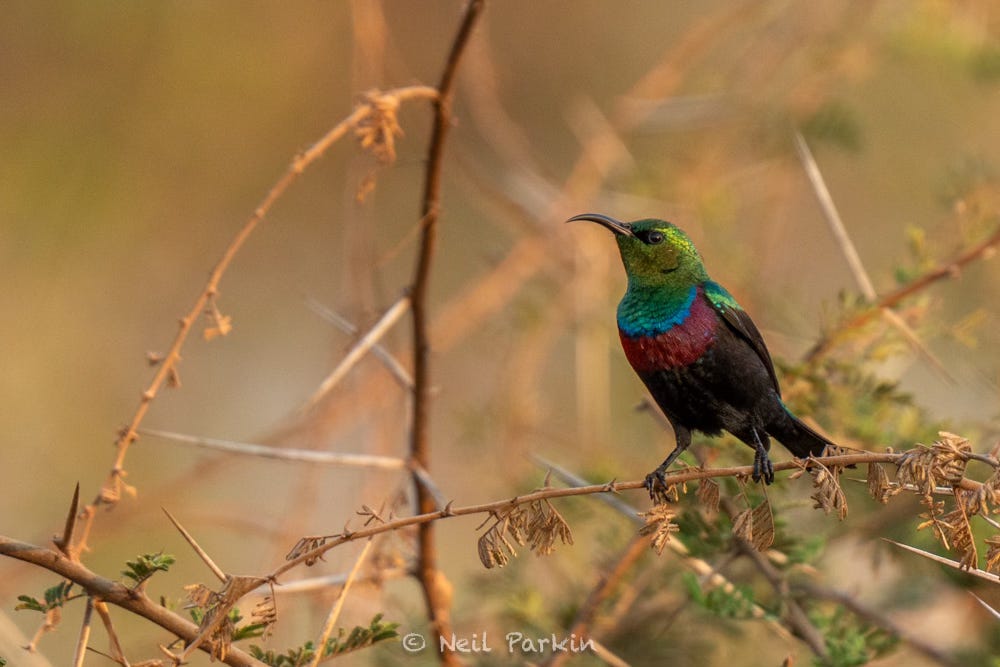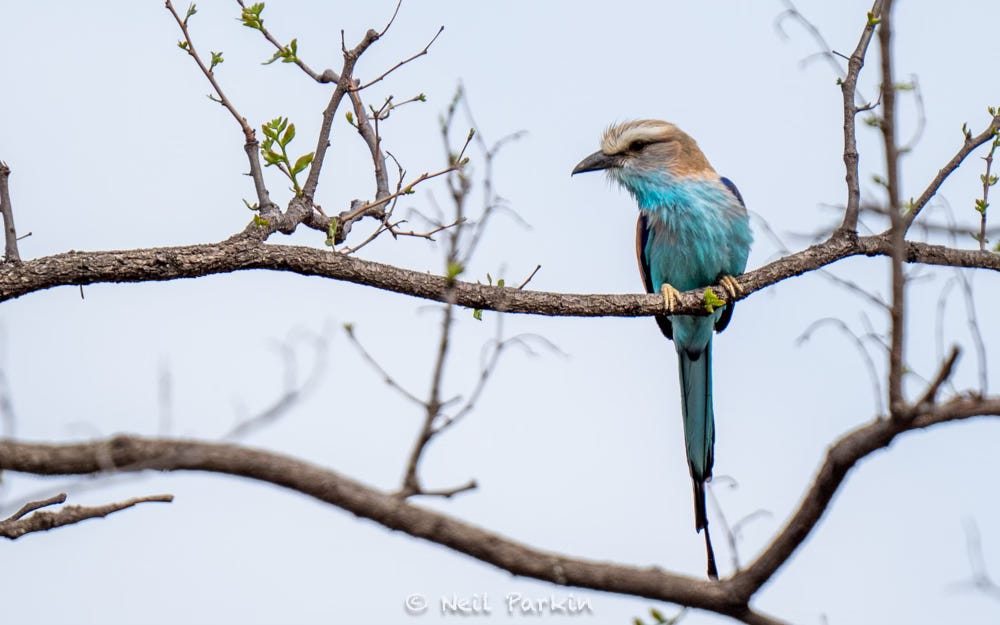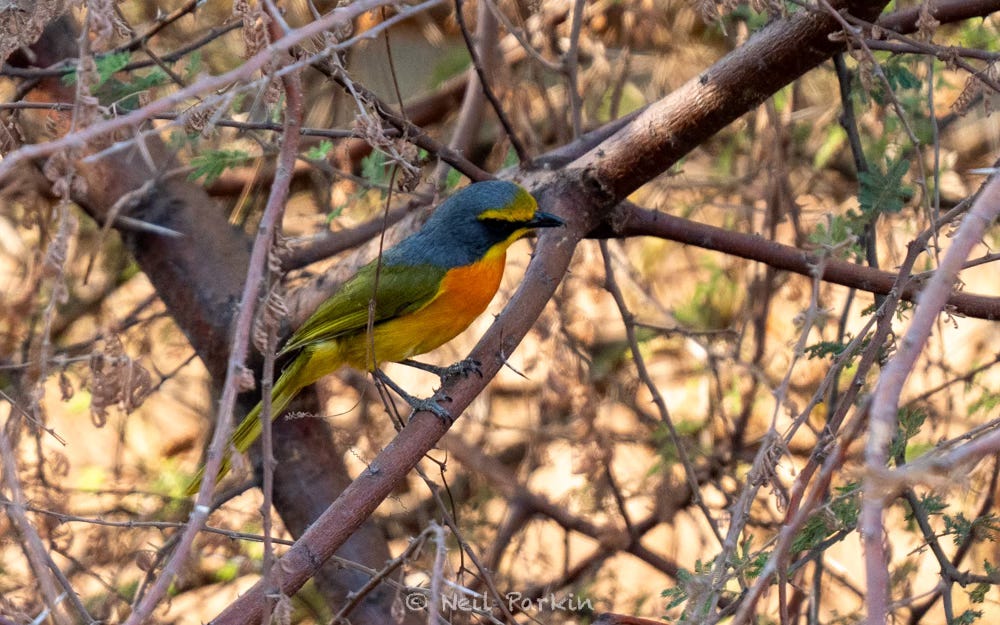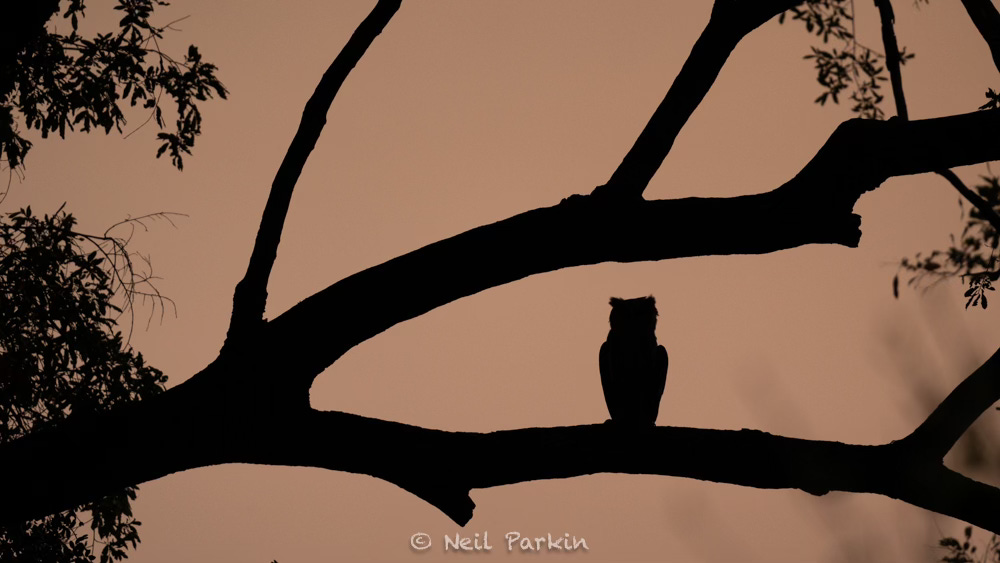
People who are interested in birds come in many degrees of seriousness. There are birders (note, not “bird-watchers”!) who keep lists of all the species they have ever seen, can recognize birds by sight or sound, know what a lore is and the difference between primary, secondary and tertiary coverts, and report sightings to citizen science sites like eBird. A few will travel great distances at the drop of a dime (or more) to see a rare bird that may have been reported on one of many social media groups, websites or apps. At the other end of the spectrum, casual birders can recognize common species and simply appreciate birds when they happen to see them wherever they are.
The latest list of birds seen in the Makuleke concession where the Return Africa Pafuri Camp is located has 463 birds on it, and that doesn’t even include one recently spotted one (the Olive Bee-eater) that had never been recorded in South Africa before. If you are out on a game drive hoping to find a leopard or hyena and are not lucky that day, you can take solace in the fact that you will never fail to see many different bird species, wether common or not (and try not to be disappointed or blasé about the uncommon ones - see: how we judge animals parts one and two).
During my 68-day stay here, without really trying too hard (with a couple exceptions), I recorded over 160 species, getting at least a “documentation picture” photo of most of them. The challenge as a photographer is to move away from simply technically good images (properly exposed, in focus, and unobscured) to those that convey some added meaning or story; most often the former is a pre-requisite for the latter. The added context can fall into at least two categories: a back-story that needs to be explained and usually is most meaningful only to the photographer or others present at the time of the sighting, or something more self-evident in the photo such as a chick in a nest, the bird catching or eating prey, a direct look at the camera, an impactful context, or behaviors like socializing, mating, fighting, and so on. Sometimes a technically good photo of a rare bird will also convey extra meaning, but only to viewers who know it’s rare. Layered on top of that is each photographer’s style, consisting of their use of composition (including linear elements and cropping), lighting, depth of field and bokeh, etc.). For me, some of these things are unconscious but become obvious when I look back at my bird photos retrospectively. But I think I still have work to do to bring in that extra context.
Anyway here are some of my favorite bird shots from my trip; see each caption for a little more explanation. Do you see any common themes? Enjoy!



















Neil your photos are absolutely exquisite! I was hoping to see the Racket-tailed roller when in Pafuri, but it eluded me. An actual photograph is so much richer than a drawing in a bird encyclopedia. Also, I spent several game drives with a serious birding couple, in search of the 3-banded Courser. You are the lucky charm they needed!
Hey Neil,
absolutely amazing pictures! :D